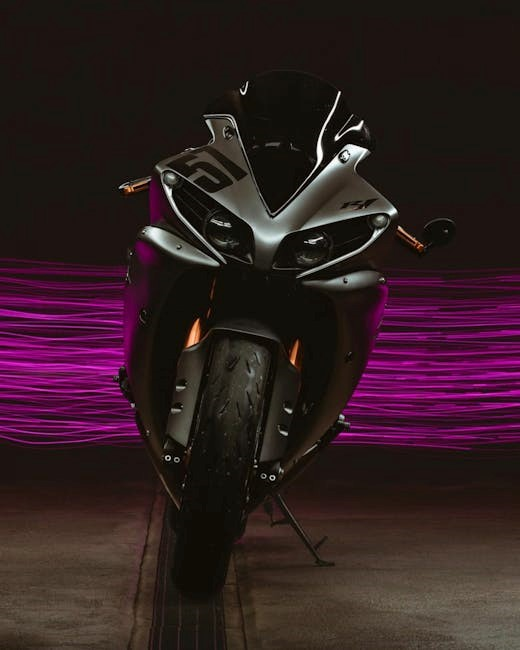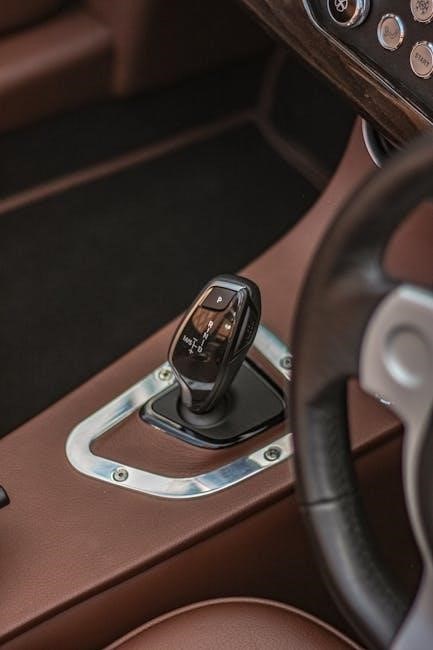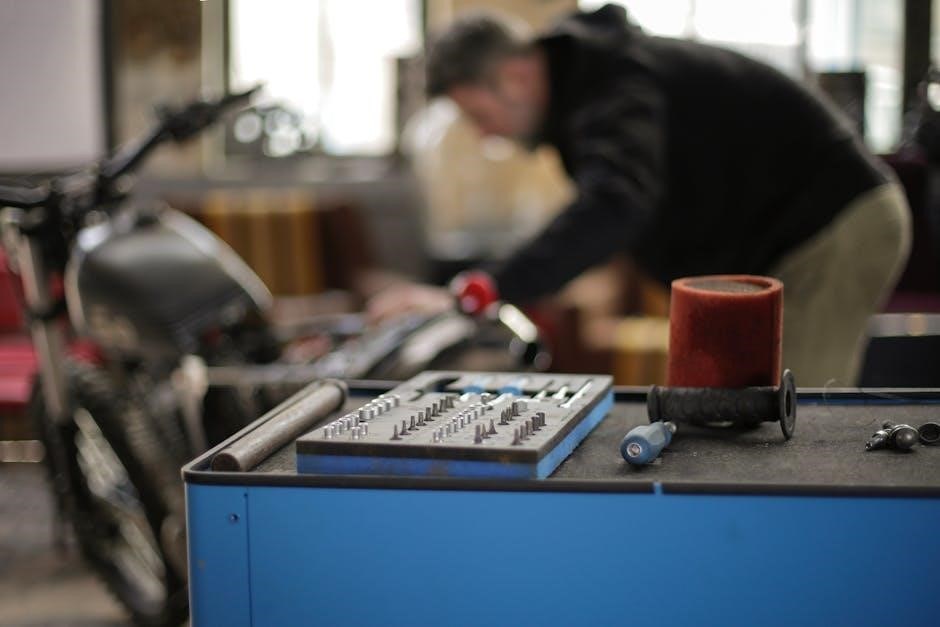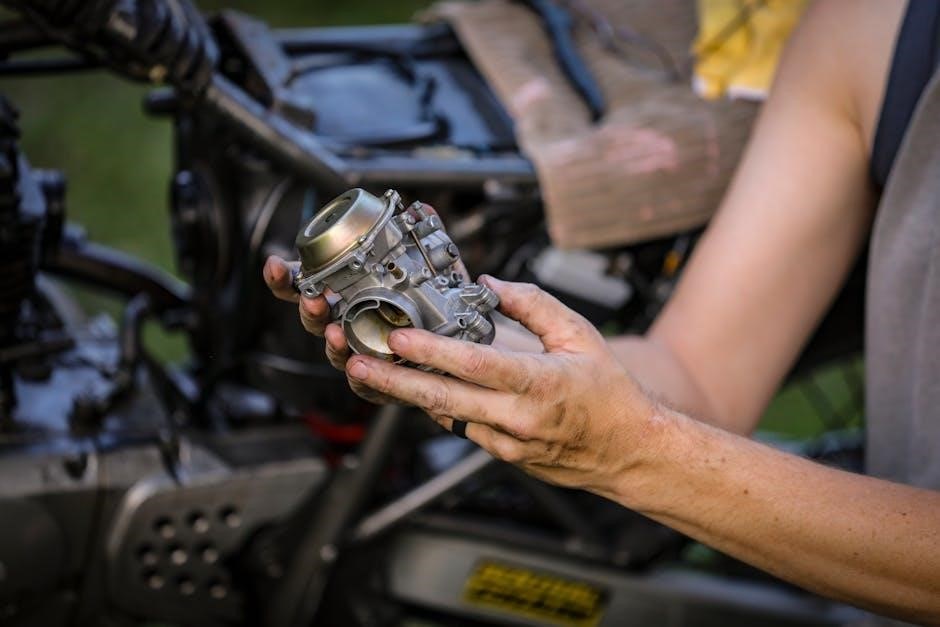Are Motorcycles Automatic or Manual? An In-Depth Guide
Motorcycles offer diverse transmission options‚ from traditional manuals requiring rider input to automatics prioritizing ease of use. This comprehensive guide explores the nuances of each‚ aiding riders in understanding their differences.
Motorcycle transmissions‚ the unsung heroes of the riding experience‚ play a crucial role in delivering power from the engine to the wheels. Understanding these systems is paramount for any rider‚ whether novice or seasoned veteran. A key consideration is the choice between manual and automatic transmissions.
Manual transmissions‚ the more traditional option‚ demand active rider engagement. They offer a direct connection to the motorcycle‚ providing a tactile and engaging experience. Riders control gear shifts‚ managing the engine’s power output to match riding conditions.
Automatic transmissions‚ on the other hand‚ offer convenience and ease of use. They eliminate the need for manual clutch operation and gear selection‚ allowing riders to focus on throttle control and maneuvering. This can be particularly beneficial in stop-and-go traffic or for riders prioritizing simplicity.
This guide will delve into the intricacies of both manual and automatic motorcycle transmissions‚ exploring their pros‚ cons‚ and suitability for different riders and riding styles.

Manual Motorcycle Transmissions
Manual motorcycle transmissions provide riders with direct control over gear selection. This allows for precise management of engine power and torque‚ enhancing the overall riding experience and connection to the machine.
Pros of Manual Transmissions
Manual transmissions on motorcycles offer several distinct advantages. Firstly‚ riders experience enhanced control‚ precisely managing gear ratios for optimal performance in diverse conditions. This direct connection to the engine provides a more engaging and responsive riding experience‚ appealing to enthusiasts who value pinpoint control.
Secondly‚ manual transmissions often contribute to better fuel efficiency compared to automatics. Without a torque converter‚ less power is lost during transmission‚ maximizing fuel economy. This can be a significant benefit for riders seeking to minimize fuel costs‚ especially during long journeys.
Furthermore‚ manual transmissions are generally simpler in design‚ leading to lower maintenance costs and increased reliability. The absence of complex automatic components reduces the risk of mechanical failures and simplifies repairs. This makes manual transmissions a practical choice for riders prioritizing dependability and ease of maintenance.
Finally‚ many riders find the act of shifting gears manually to be a rewarding and integral part of the motorcycling experience‚ enhancing the feeling of being connected to the bike.
Cons of Manual Transmissions
Despite their advantages‚ manual motorcycle transmissions have drawbacks. One major issue is the increased workload on the rider. Shifting gears manually requires constant attention and coordination‚ potentially leading to fatigue‚ especially in heavy traffic or on long rides. This can be a significant disadvantage for beginner riders or those who prefer a more relaxed experience.
Another drawback is the steeper learning curve. Mastering the clutch and gear shifting technique takes time and practice. New riders may find it challenging to coordinate these actions smoothly‚ leading to stalls or jerky starts. This can be frustrating and potentially unsafe‚ especially in challenging riding conditions.
Moreover‚ manual transmissions can be less convenient in stop-and-go traffic. Constantly shifting gears in congested areas can be tiring and cumbersome. Riders may find themselves wishing for the ease of an automatic transmission in such situations.
Lastly‚ some riders may perceive manual transmissions as less user-friendly than automatics‚ particularly if they are accustomed to driving automatic cars. The added complexity of manual shifting can be a deterrent for those seeking a simpler riding experience‚ reducing the enjoyment of the ride.

Automatic Motorcycle Transmissions
Automatic motorcycle transmissions eliminate manual gear shifting‚ offering a simpler riding experience. They automatically adjust gear ratios‚ allowing riders to focus on throttle and braking for ease of use.
Pros of Automatic Transmissions
Automatic transmissions on motorcycles offer several advantages. Firstly‚ they provide ease of use‚ especially beneficial for beginner riders or those navigating stop-and-go traffic. The absence of a clutch and gear shift levers allows riders to focus solely on throttle and braking. This simplicity reduces the learning curve and mental load‚ making riding less fatiguing.
Secondly‚ automatic transmissions can enhance performance in certain situations. Their seamless gear changes can result in quicker acceleration‚ as there’s no interruption for manual shifting. This is particularly useful in urban environments or when overtaking. Moreover‚ some automatic systems offer different riding modes‚ such as sport or rain‚ adapting the transmission’s behavior to various conditions.
Finally‚ automatic transmissions contribute to rider comfort. By eliminating the need for constant clutch and gear engagement‚ they reduce physical strain‚ especially on longer rides. This allows riders to enjoy the scenery and overall experience without being burdened by the demands of a manual transmission. The convenience factor makes automatic motorcycles an appealing choice for many.
Cons of Automatic Transmissions
Despite the advantages‚ automatic motorcycle transmissions have drawbacks. A primary concern is the reduced rider engagement. The lack of manual gear selection can diminish the feeling of control and connection to the machine. Some riders find this less engaging‚ missing the tactile feedback and precise control offered by manual transmissions.
Another potential disadvantage is fuel efficiency. Historically‚ automatic transmissions have been less fuel-efficient than manuals‚ though advancements are narrowing this gap. However‚ some automatic motorcycles may still consume more fuel per mile‚ especially during aggressive riding. This can lead to increased running costs over time.
Furthermore‚ maintenance and repair can be more complex and expensive. Automatic transmissions typically have more intricate internal components‚ potentially leading to higher repair bills if issues arise. Also‚ the availability of qualified technicians for automatic motorcycle transmissions may be limited in some areas. This is due to the relative rarity compared to manual transmissions. Ultimately‚ these factors can influence the overall ownership experience.

Semi-Automatic Motorcycle Transmissions
Semi-automatic motorcycle transmissions offer a blend of automatic convenience and manual control. These systems eliminate the clutch lever‚ but still require the rider to initiate gear changes.
How Semi-Automatic Transmissions Work
Semi-automatic transmissions in motorcycles represent a fascinating middle ground between fully manual and fully automatic systems. The core difference lies in the clutch operation. Unlike manual transmissions‚ which require the rider to manually engage and disengage the clutch using a hand lever‚ semi-automatic systems automate this process.
These systems typically employ electronic sensors and actuators to control the clutch. When the rider initiates a gear change‚ either by pressing a button or using a foot lever‚ the system momentarily disengages the clutch‚ allowing for a smooth gear shift. After the shift is complete‚ the clutch re-engages automatically.
This design offers several advantages. Riders benefit from the reduced workload‚ especially in stop-and-go traffic. The absence of a clutch lever frees up the rider’s hand and allows for more focus on balance and control. Semi-automatic systems still provide a degree of manual control‚ allowing riders to select gears as needed‚ offering a more engaging riding experience compared to fully automatics.

Automatic vs. Manual: A Comparison
Automatic and manual motorcycles present distinct riding experiences. This section provides a comprehensive comparison‚ examining fuel efficiency‚ rider control‚ and the overall experience each transmission type offers to the motorcyclist.
Fuel Efficiency: Automatic vs. Manual
Fuel efficiency is a crucial consideration when choosing between automatic and manual motorcycle transmissions. Traditionally‚ manual transmissions have been lauded for their superior fuel economy. This advantage stems from the direct mechanical link between the engine and the wheels‚ minimizing power loss compared to automatic systems that rely on torque converters. However‚ modern automatic motorcycle transmissions are closing this gap.
Advancements in technology‚ such as sophisticated electronic controls and improved transmission designs‚ have made automatics more efficient. While manual transmissions still generally offer a slight edge in fuel economy‚ the difference is becoming less pronounced. The specific fuel efficiency of a motorcycle depends on various factors‚ including engine size‚ riding style‚ and road conditions.
Ultimately‚ riders should weigh fuel efficiency against other considerations‚ such as ease of use and desired level of control‚ when making their choice.
Control and Rider Experience
The choice between automatic and manual transmissions significantly impacts control and the overall riding experience. Manual transmissions offer riders a high degree of control over the motorcycle’s power delivery. Riders can precisely select gears to match engine speed to road conditions‚ maximizing acceleration or fuel efficiency. This level of engagement provides a direct and connected feel‚ which many experienced riders find rewarding.
Automatic transmissions prioritize ease of use‚ eliminating the need for manual clutch operation and gear shifting. This allows riders to focus more on steering‚ braking‚ and road awareness. While automatics may offer less direct control‚ they can be particularly advantageous in stop-and-go traffic or for riders who prefer a more relaxed riding experience.
Ultimately‚ the ideal choice depends on individual preferences and riding style. Riders who value precision and engagement may prefer manual transmissions‚ while those seeking convenience and ease of use may opt for automatics.
Choosing the Right Transmission for You
Selecting the right motorcycle transmission hinges on individual needs and riding preferences. Consider factors like experience level‚ intended use‚ and desired level of control for optimal choice.
Factors to Consider When Choosing
Selecting the right motorcycle transmission involves careful consideration of several factors. Your riding experience is paramount; beginners might favor automatic transmissions for their ease of use‚ allowing them to focus on balance and road awareness. Experienced riders might prefer the control and engagement offered by manual transmissions.
Consider your typical riding environment; Automatic transmissions excel in stop-and-go traffic‚ reducing rider fatigue. Manual transmissions shine on open roads‚ providing greater control during acceleration and cornering. Think about the type of riding you plan to do most often – commuting‚ touring‚ or sport riding – as this will influence your transmission needs.
Personal preference also plays a crucial role. Some riders enjoy the tactile feel of shifting gears and the direct connection to the engine that manual transmissions provide. Others prioritize convenience and ease of operation‚ finding automatic transmissions more enjoyable. Ultimately‚ the best choice depends on your individual priorities and riding style.
Finally‚ test ride motorcycles with both types of transmissions to experience the differences firsthand. This will help you determine which type best suits your needs and preferences.
The Future of Motorcycle Transmissions
The landscape of motorcycle transmissions is evolving‚ with advancements blurring the lines between manual and automatic systems. The introduction of semi-automatic options and increasingly sophisticated automatic transmissions indicates a shift towards greater rider convenience and accessibility.
While manual transmissions remain popular among purists who value control and engagement‚ automatic transmissions are gaining traction due to their ease of use and suitability for diverse riding conditions. The future likely holds a blend of both‚ with manufacturers offering a range of options to cater to different rider preferences and skill levels.
Technological innovations‚ such as Honda’s E-Clutch‚ are further shaping the future by providing manual control with automatic assistance. These advancements promise to enhance the riding experience for both novice and experienced riders‚ making motorcycles more accessible and enjoyable for a wider audience.
Ultimately‚ the future of motorcycle transmissions lies in innovation and adaptation‚ with a focus on providing riders with the best possible combination of performance‚ convenience‚ and control. As technology continues to advance‚ we can expect even more sophisticated and versatile transmission options to emerge‚ further enhancing the riding experience.





